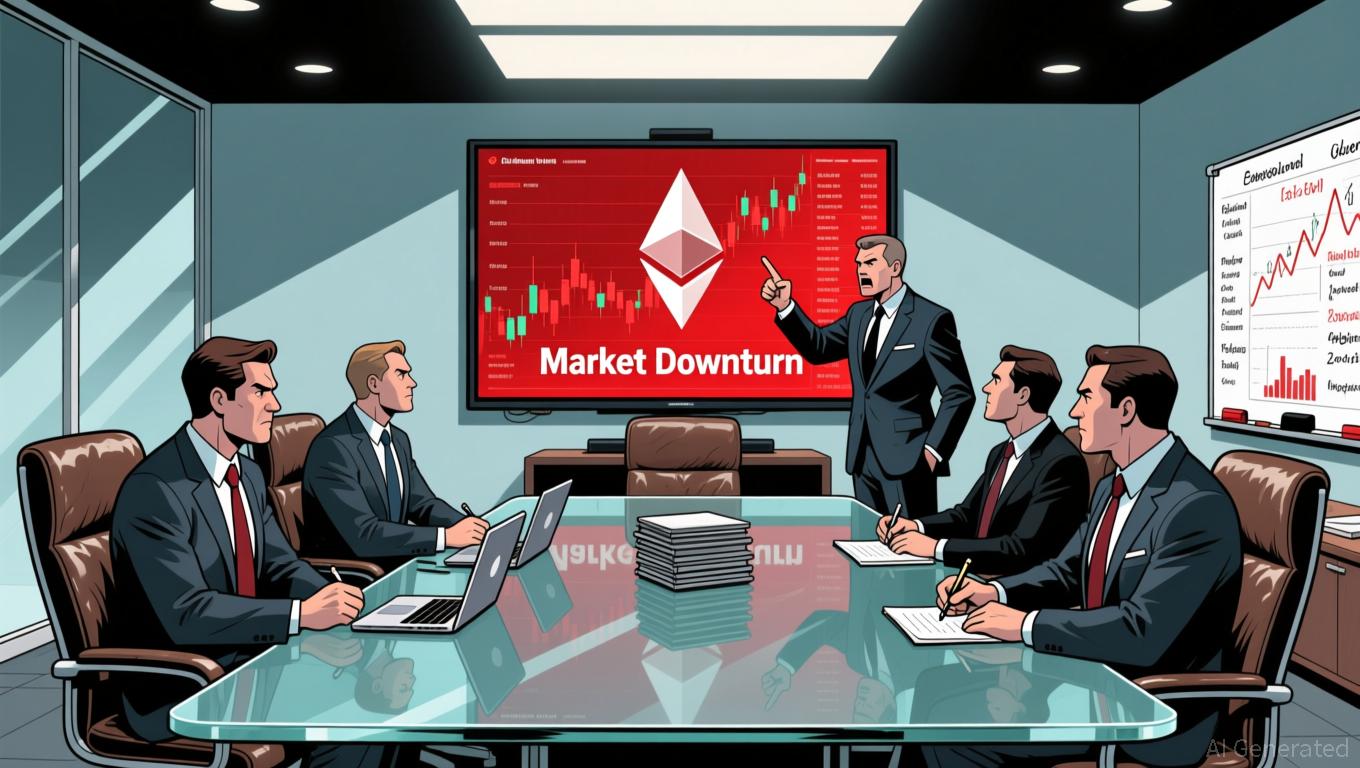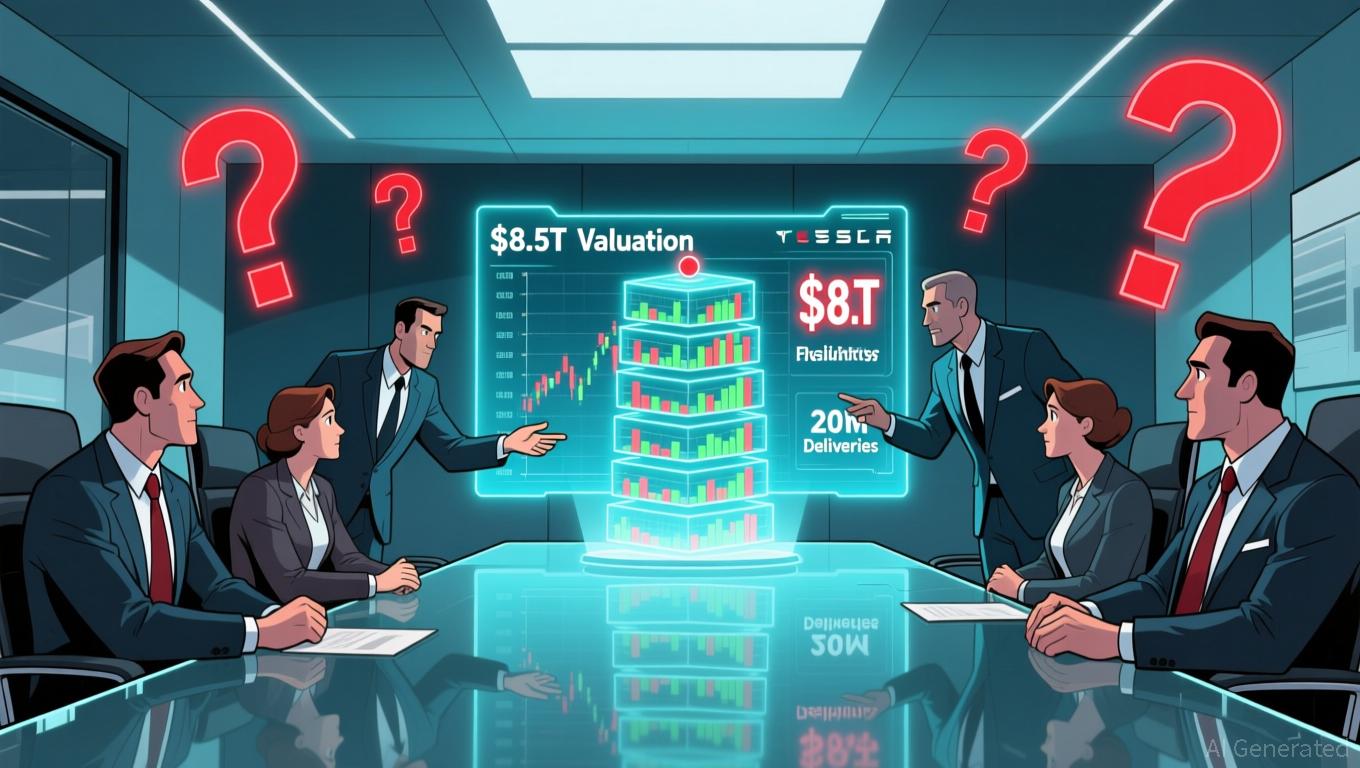U.S. and China Reach Rare Earth Agreement: One Year of Stability Despite Ongoing Competition
- China suspended new export controls on rare earths and other materials for one year, easing U.S.-China trade tensions via a Trump-Xi agreement. - The deal includes U.S. tariff rollbacks and China halting investigations into semiconductor firms like Nvidia , with provisions expiring in 2026. - Experts warn China's 90% refining dominance and low-cost production ensure its strategic leverage remains unchallenged despite temporary concessions. - U.S. rare earth stocks rose, but analysts stress global supply
On October 30, 2025, China revealed it would pause the implementation of new export restrictions on rare earth minerals for a period of one year, signaling a notable easing of trade frictions between the U.S. and China after a meeting between President Donald Trump and Chinese President Xi Jinping, as reported by
The arrangement also includes China ceasing its investigations into U.S. semiconductor companies, such as antitrust and anti-dumping cases against firms like

China’s dominance in rare earths—responsible for 90% of global refining and 70% of mining—has long served as a strategic tool, according to
Market responses to the agreement were varied. Shares of U.S. rare earth companies such as
At the same time, the U.S. government has ramped up investment in domestic rare earth production. For example, the Department of Defense entered a $400 million equity agreement with MP Materials to support a magnet manufacturing plant, including a price guarantee for neodymium-praseodymium, a crucial magnet component, as reported by
Although the Trump-Xi deal provides short-term relief, it highlights the underlying instability in U.S.-China economic ties. Both countries have achieved important concessions—Washington’s tariff reductions and Beijing’s export relaxations—but the lack of a lasting solution means tensions could easily resurface. As analysts have observed, the effective lifting of controls may bring temporary market stability, but China’s overwhelming role in rare earth mining and processing continues to give it significant influence.
Disclaimer: The content of this article solely reflects the author's opinion and does not represent the platform in any capacity. This article is not intended to serve as a reference for making investment decisions.
You may also like
Dogecoin News Update: SEC Sets November 2025 as Pivotal Deadline for Dogecoin ETF Approval
- Bitwise files a fast-track SEC 8(a) ETF application for Dogecoin , targeting November 2025 approval if regulators remain silent. - The move reflects growing institutional demand for crypto exposure amid regulatory uncertainty and a competitive ETF landscape. - Grayscale's DOJE ETF and rivals' XRP/Dogecoin products highlight intensified competition, with $24M+ in early trading volumes. - Analysts project 300% DOGE price gains if resistance breaks, while SEC's crypto-friendly leadership and legal battles w

Ethereum Updates Today: SharpLink Moves ETH—A Bid for Stability or Signs of Major Overhaul?
- SharpLink Gaming transferred $14M ETH to OKX ahead of Q3 earnings amid crypto market declines. - The move highlights challenges for crypto-holding firms as ETH drops 25% in 30 days and stocks like SBET fall 4.28%. - Institutional investors increasingly use ETH staking for yield, contrasting Bitcoin-focused strategies lacking comparable returns. - CertiK emphasizes treasury management integrity as spot crypto ETFs shift focus to secure asset handling amid governance scrutiny.

Tesla’s $1 Trillion Musk Deal: Strategic Move to Keep CEO or Example of Excessive Corporate Power?
- Tesla shareholders approved a $1 trillion compensation package for Elon Musk, tied to aggressive targets like $8.5 trillion valuation and 20 million vehicle deliveries. - Critics call the package excessive, while Tesla defends it as critical to retain Musk amid his SpaceX, xAI, and Trump administration commitments. - The Texas-based approval bypasses Delaware's strict governance rules, sparking debates over "race to the bottom" in corporate accountability. - Skeptics question feasibility of targets, with

The Quantum Computing Hype Cycle and What It Means for the Valuation of Cybersecurity Stocks
- Quantum computing threatens RSA/ECC encryption by 2025, accelerating post-quantum cryptography (PQC) adoption and investment in quantum-safe firms. - NIST's 2030 PQC standards and "harvest now, decrypt later" strategies force urgent infrastructure upgrades, with governments stockpiling sensitive data. - SEALSQ leads the quantum-safe sector with $220M liquidity, $17.5M 2025 revenue guidance, and PQC-embedded semiconductors for IoT/automotive sectors. - High-risk plays like BTQ (blockchain PQC) and pre-rev
